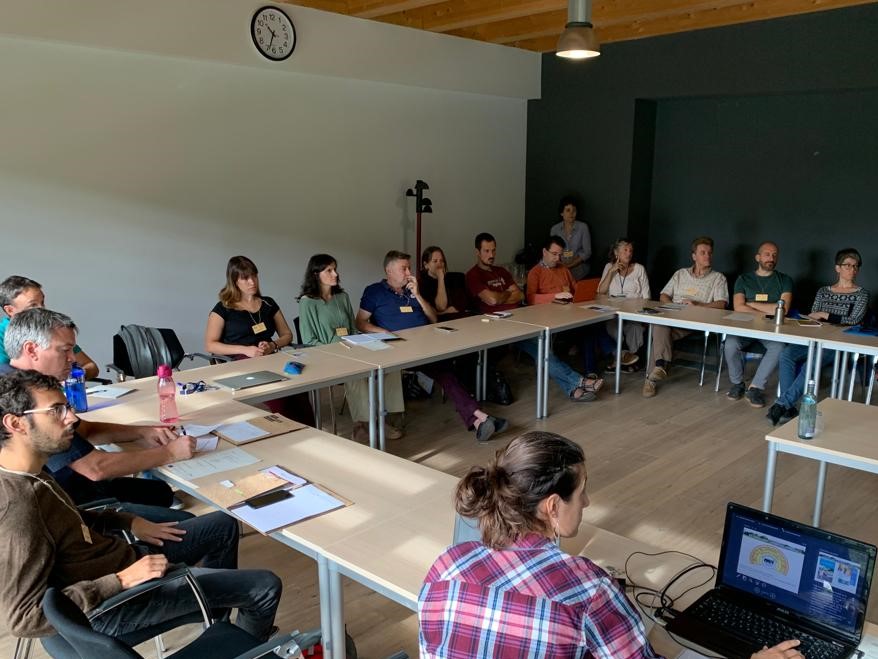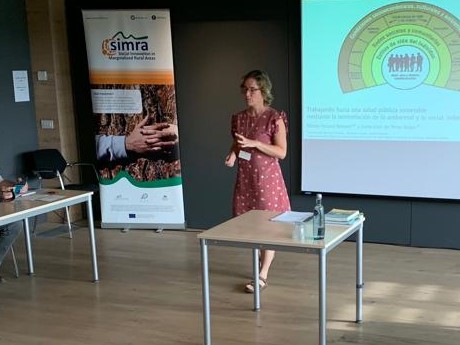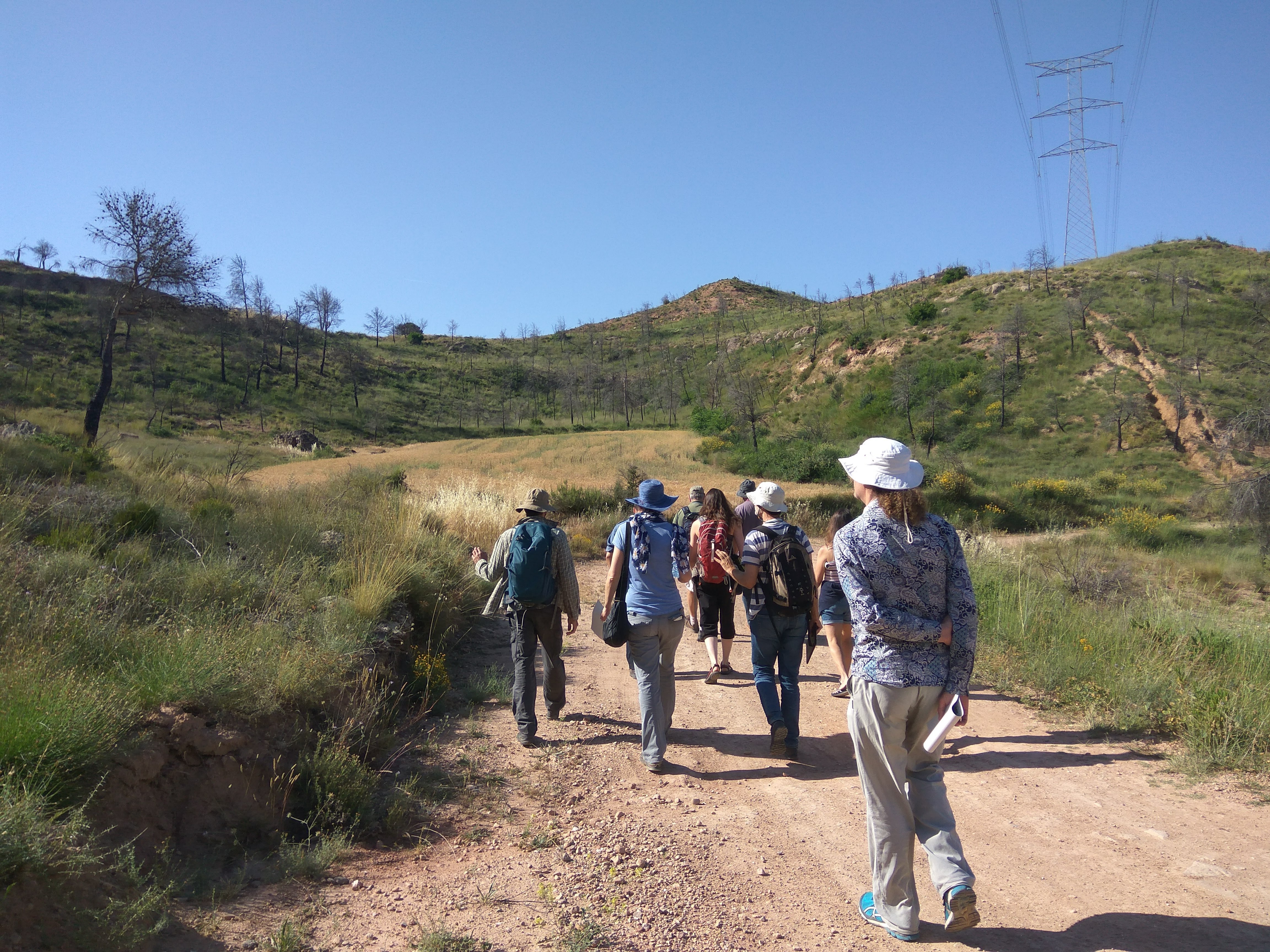Social Innovation in Marginalised Rural Areas (SIMRA) is a European project focused on research and innovation actions. FORECO, one of the 26 partners in the project, is in charge of one of its most stimulating tasks: to collect the accumulated knowledge from research and turn it into innovative action. Now that the SIMRA project is approaching its end after nearly 4 years of work, one of our main tasks is to communicate to the public what we have done so far, and what we have learnt in the process.
One of my take-home messages from these four years of working in the SIMRA innovation action, is that the road to implementation can be long and winding. Re-designing and re-thinking are all very important parts of the innovation action process. In fact, it was thanks to this “long and winding” road that I had the chance to meet, discuss and learn about a great number of initiatives having a positive impact on rural areas in Catalonia. Led by cooperatives, associations and collectives, these initiatives were all providing different solutions for the unmet needs of their communities, working collectively and strengthening social networks. This work perfectly reflects what social innovation means in practice, even though many of the initiatives’ leaders were not familiar with the term.
SIMRA is now supporting a pilot community project in Solsona (Province of Lleida, in Central Catalonia, Spain) which aims at re-connecting people with forests and unravelling the potential effect forested areas can have on human well-being. The promotor of this pilot, Mireia Pecurul, is a knowledgeable researcher in the field of forestry and human wellbeing. Drawing from many years of experience in the UK public sector, where such programmes are more developed, this pilot aims to adapt the successes of the UK to Catalonia’s specific context.

Being involved in the SIMRA project, and specifically with this pilot in Solsona, has taught me that social innovation is about people, about communities, and about sharing knowledge. And it is inextricably linked to the territory. With all these priorities in mind, we naturally came to the idea that our closing workshop should go beyond our own innovation action. By inviting other social innovators, we would learn from their experiences as well, and the knowledge sharing experience would be a lot richer. As a Catalan saying goes “The more sugar you add, the sweeter it gets.”
With the support of ARCA, the association that brings together all the Local Action Groups (LAG)1 in Catalonia, FORECO organised a workshop held at the Forest Science and Technology Centre of Catalonia (CTFC), gathering a wide range of territorial actors. The programme ultimately consisted of presentations on six different initiatives and a session dedicated to deeper discussion.
Jordi Vilalta, manager of the LAG for Central Catalonia, opened the day by highlighting the importance of knowing the area where you operate: “social dynamics in the Pyrenees are different from those in the coast”. SIMRA’s social innovator, Mireia Pecurul, brought this lesson on the importance of context beyond Spain. With a presentation on the benefits that forests have on wellbeing, she shared her experience on adapting a British model to the Catalan context. When asked about her take-home message, her answer was straightforward “patience, patience, and patience. Things take time to develop”.

Marina Vilaseca followed with experiences from L’Arada Working Cooperative, whose work in the southern area of the Solsonès is remarkable. She highlighted the power of local identity to bring people together. Josep Pintó, from the cooperative “Biolord”, which grows apples in the mountainous Vall de Lord (Lord Valley), in the northern Solsonès, strongly agreed. For him and his partners, it was a matter of getting back some of the identity that had been lost to the rapid urbanisation and changing landscape of the region.
The Agricultural School of Solsonès is one dynamic actor in the area. Óscar García, one of the school’s lecturers, explained how their regular activities provide them with opportunities for cooperation. However, he pointed out that success tends to follow when actors are able to create “win-win” situations. This is one of the conditions that the Col·lectiu Eixarcolant, our final presenter, constantly strives to create. They know that until you gather all the stakeholders together to discuss, it is difficult to go forward with the project. They use traditional knowledge as a tool for making things happen, with significant success to-date.
After lunch, participants further discussed and reflected on best practices to set up social innovation initiatives in rural areas. This discussion pointed to three main contributors to successful social innovation projects: (1) Do things. One needs to start in order to make things happen, even when it means to start small; (2) Get to know the people. Meet and learn from those who are already working in the field; and (3) Policymakers still have a long way to go in properly addressing the needs of rural entrepreneurs. Social innovators may be able to play a role in filling service gaps and motivating policy.
One of the key remaining tasks in the SIMRA project is to publish a set of policy recommendations and guidelines drawn from the lessons of research and innovation actions to boost social innovation in rural areas. If you are interested in our conclusions, stay tuned!
Social Innovation in Marginalised Rural Areas (SIMRA) seeks to advance understanding of social innovation and innovative governance in agriculture, forestry and rural development in marginalised rural areas. The project is funded by the European Union’s Horizon 2020 research and innovation programme under grant agreement number 677622.
1 The Local Action Groups are associations that operate at the county level. They integrate public bodies (e.g. municipalities) as well as private entities such as associations or business, representative of the socioeconomic fabric of the area where they operate. Their main goal is to implement the European strategies of rural development, linked to the LEADER programme.
Last modified: 11 December 2019










